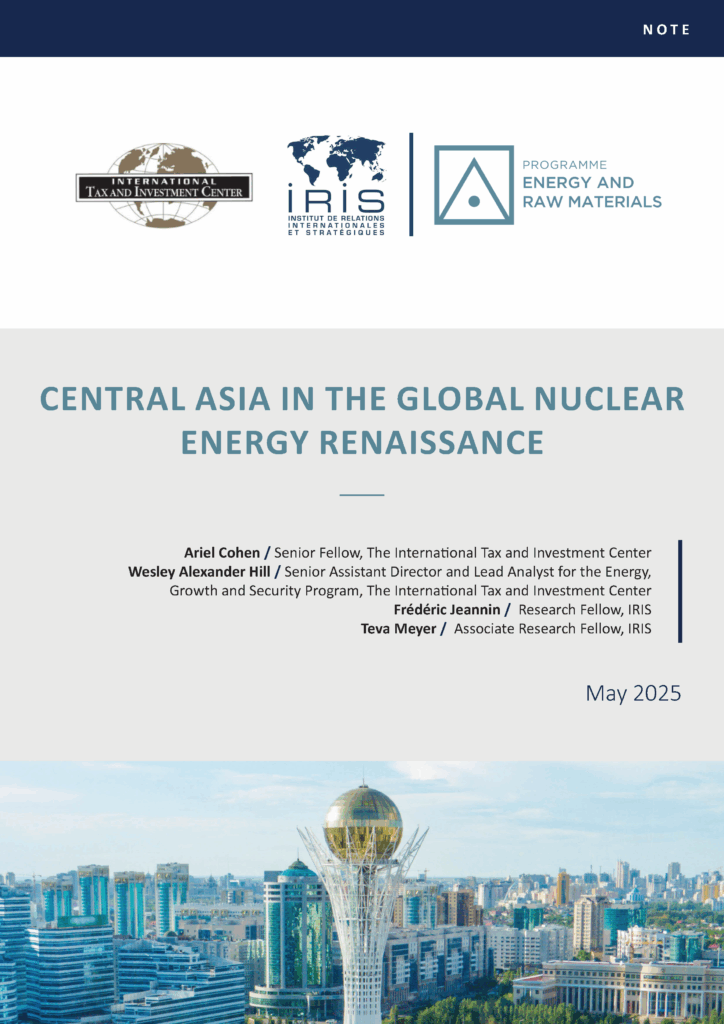Notes / Énergie et matières premières
20 mai 2025
Central Asia in the Global Nuclear Energy Renaissance

On October 15, 2024, shareholders of Kazatomprom, Kazakhstan’s national atomic company, approved the largest sale of natural uranium concentrates in the company’s history to China National Uranium Corporation (CNUC). While the exact volume was not disclosed, the deal, when combined with previous agreements with CNUC, accounts for over 50% of Kazatomprom’s total asset book value. Less than a month later, CNUC further expanded its footprint in Kazakhstan by acquiring former Rosatom-held assets in the Zarechnoye uranium mine.
These developments reflect both the urgency among reactor operators to secure uranium supplies amid an anticipated global nuclear resurgence and Central Asia’s critical role in enabling this shift. In the most optimistic scenario, the International Atomic Energy Agency (IAEA) projects that global nuclear capacity could double to 950 gigawatts by 2050. This expansion would drive annual uranium demand from 66,000 tons in 2024 to 180,000 tons by mid-century. However, the nuclear industry is already facing a supply deficit, with natural uranium mining covering only 74% of current needs. The shortfall is met through existing inventory and secondary sources, such as depleted uranium from enrichment and reprocessed uranium from spent fuel. Compounding the challenge, many of the world’s largest uranium mines are expected to see reserve depletion by the early 2040s, necessitating new investments. In Kazakhstan alone, without further expansion, uranium output is projected to be halved by 2041.
Central Asia occupies a paradoxical position in the rapidly evolving nuclear landscape. Kazakhstan alone supplies 43% of the world’s uranium, with 21,227 tons produced, followed closely by Uzbekistan, coming in fifth globally and producing 3,300 tons. With further expansion expected in Mongolia and Kyrgyzstan. The region is also a key player in global nuclear diplomacy, actively advancing non-proliferation efforts that help the deployment of nuclear technologies abroad. On the other hand, despite their historical involvement in nuclear energy during the Soviet era, none of these countries currently generate nuclear power, and ongoing construction projects are unlikely to be completed before 2035 at the earliest. So, what role will Central Asia play in the ongoing nuclear renaissance? Can the region move beyond being a mere supplier of raw materials to capture more value from these dynamics? And how might this resurgence foster deeper regional integration?
This report was written in partnership with the Energy, Growth, and Security Program of The International Tax and Investment Center (ITIC).




